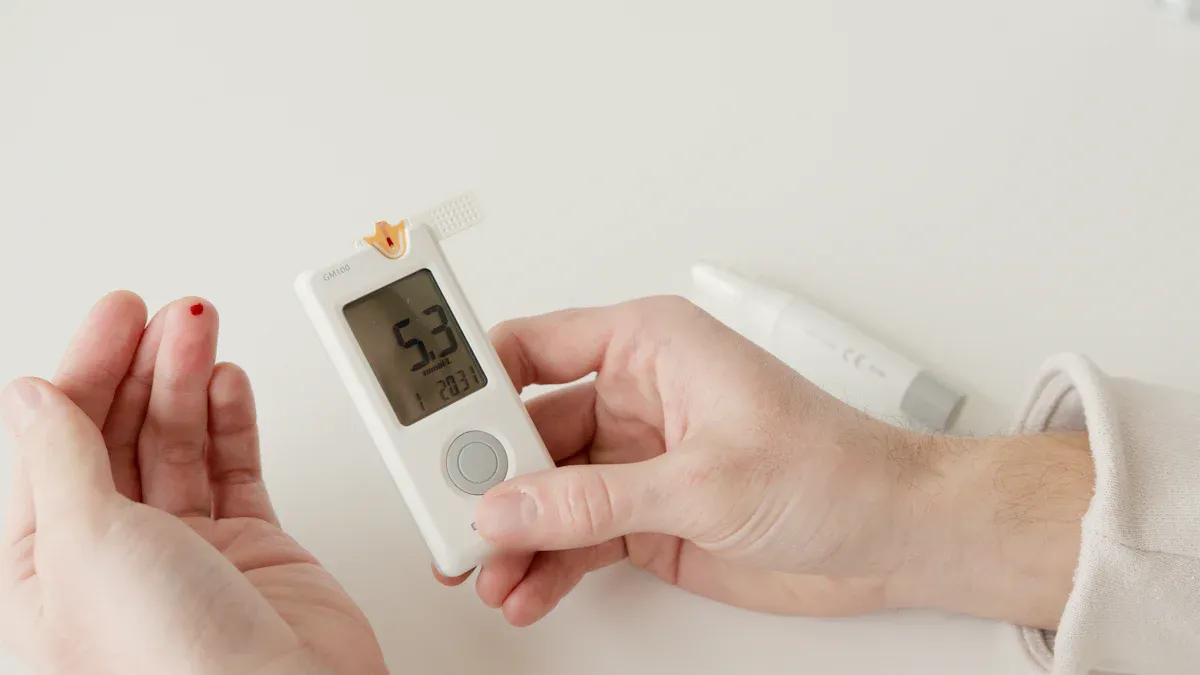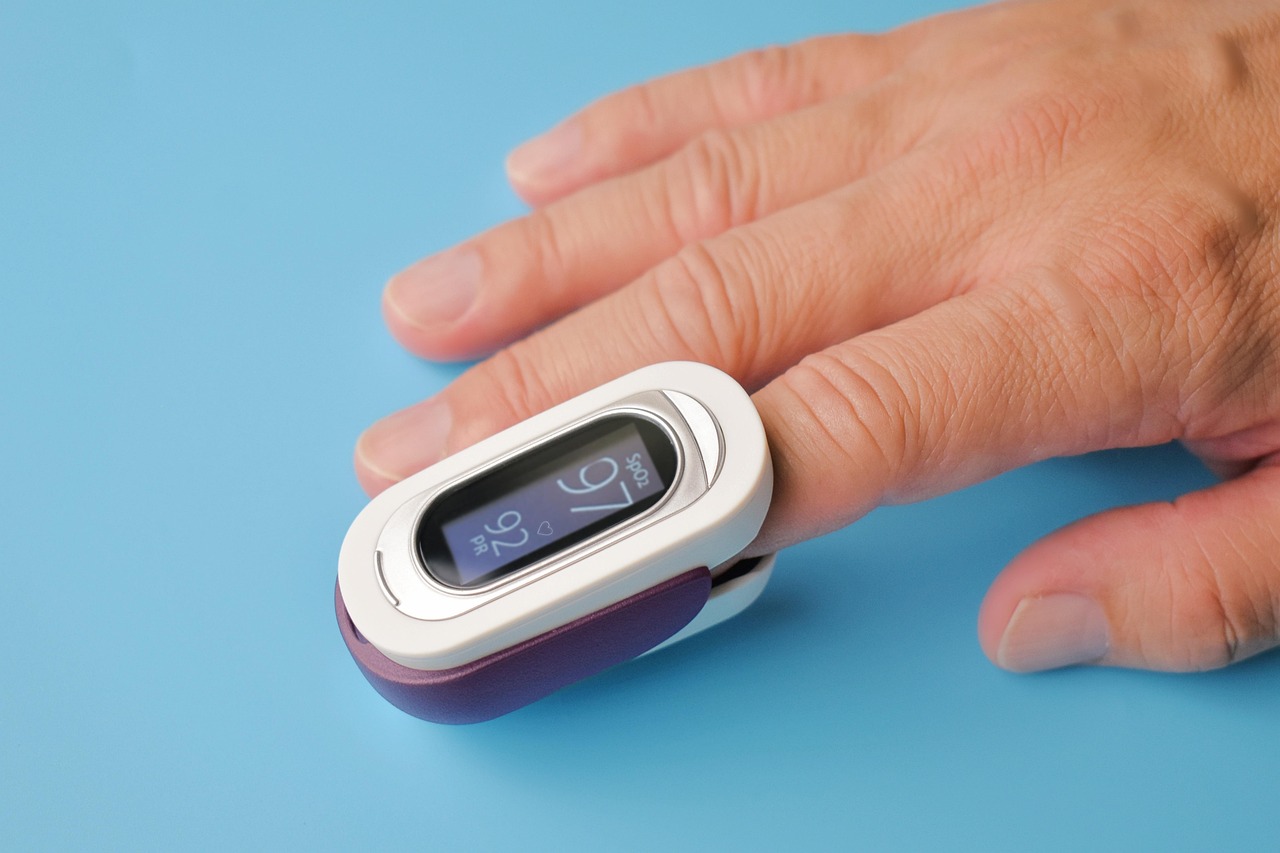
Lithium battery packs drive the mobility of point-of-care diagnostic devices, empowering you to deliver digital, biomedical diagnosis and rapid diagnostic tests beyond traditional labs. Digital point-of-care devices streamline testing and diagnosis in emergency and rural settings.
Digital, portable diagnostics reduce reliance on central labs, improve patient outcomes, and expand healthcare access.
Sustainability and new digital power solutions now shape the future of point-of-care.
Key Takeaways
Lithium battery packs enhance the mobility of point-of-care diagnostic devices, allowing for rapid testing in various environments.
Advanced battery management systems improve reliability and safety, ensuring accurate diagnostics and extending battery life by up to 30%.
Wireless power solutions and sustainable battery technologies are transforming point-of-care diagnostics, promoting infection control and reducing environmental impact.
Part 1: Technical Needs for Point-of-Care Devices
1.1 Power Density and Autonomy
You rely on digital point-of-care diagnostic devices to deliver rapid, quantitative results in diverse environments. High power density in lithium battery packs ensures that your digital chip-based platforms support continuous monitoring and quantitative nucleic acid detection, even during extended field operations. For example, digital nucleic acid amplification and quantitative nucleic acid testing require stable, self-powered operation to maintain assay accuracy.
Feature | Specification |
|---|---|
Laser Class | Class 3R |
Maximum Output Power | 5 mW |
Numerical Aperture | f/1.1 |
Optical Bench Design | Custom volume phase holographic grating optimized for high efficiency and minimal scatter |
Safety Feature | Enclosed laser to prevent leakage |
Digital diagnostics often use chip-based detection modules that demand high autonomy. Cart-based point-of-care devices may use four lithium-ion battery packs in parallel, while notebook-based platforms use two packs. Handheld smart probes, essential for decentralized biomedical testing, typically rely on one or two lithium-polymer cells as their main self-powered source. This configuration supports digital, quantitative detection and enables you to deploy diagnostic tests in medical, security, and industrial settings.
1.2 Reliability and Safety
You need reliable, self-powered digital diagnostics for accurate detection and diagnosis. Battery reliability issues can disrupt digital testing and compromise patient outcomes. Common challenges include overcharging, undercharging, leakage, swelling, and loose connections. Environmental factors such as heat or moisture can also impact battery performance in point-of-care diagnostic devices.
Reliability Issue | Description |
|---|---|
Battery Overcharging | Can lead to overheating and potential failure of the device. |
Battery Undercharging | Frequent use can result in insufficient charge, leading to device malfunction. |
Leakage | Can cause damage to the device and pose safety risks. |
Swelling | Indicates potential failure and can affect device performance. |
Loose Connections | Can interrupt power supply, leading to device inoperability. |
Confusion with Indicators | Lack of clear battery indicators can lead to improper usage and unexpected failures. |
Environmental Factors | Excessive heat, cold, or dampness can cause battery and connection failures. |
Maintenance Challenges | Issues with battery maintenance and procurement can lead to reliability problems in devices. |
One critical aspect of these regulatory standards is to ensure that battery contacts are resilient to various operational stresses, including temperature fluctuations, moisture, and corrosive environments. This is particularly relevant in medical device settings where devices may be exposed to sterilization processes, bodily fluids, or cleaning agents.
Manufacturers are required to keep detailed records of the design, materials used, testing procedures, and compliance with established regulations.
This level of oversight provides a safety net in the event of a failure, allowing for thorough investigations that could lead to improved designs or additional preventive measures.
You should integrate advanced battery management systems (BMS) to monitor self-powered chip performance and ensure safe, digital operation. Lead-acid and lithium battery chemistries, including LiFePO4 and solid-state battery options, must meet strict medical standards for safety and performance. You can trust these self-powered solutions to deliver consistent, quantitative results for digital diagnostics, even in demanding environments.
Part 2: Engineering Challenges
2.1 Power Management
You face significant challenges in managing power for every point-of-care diagnostic device. Digital chip-based platforms require precise energy control to support continuous monitoring, digital nucleic acid amplification, and quantitative nucleic acid detection. Efficient thermal management is crucial, especially for digital diagnostics that use heating systems during biomedical assay cycles. You can reduce energy waste and improve temperature control by integrating printed flexible heaters into your self-powered chip modules.
Advanced power management systems, such as BMS, deliver real-time monitoring and diagnostics for your digital platforms.
These systems calculate state of charge and state of health with high precision, preventing overcharging and over-discharging.
You can extend battery life by up to 30% and ensure safe, self-powered operation for up to 20 years.
Tip: Optimize your digital chip design for energy efficiency to maximize the autonomy of your self-powered diagnostic tests.
2.2 Miniaturization
Miniaturization drives the portability and usability of point-of-care devices. You can now deploy digital, self-powered chip platforms in remote or resource-limited settings. The table below highlights how miniaturized lithium battery packs enhance digital diagnostics:
Evidence Description | Impact on Portability and Usability |
|---|---|
Handheld ultrasound devices that fit in a physician’s pocket | Compact digital chip designs enable true mobility |
Long-lasting batteries for extended fieldwork | Reliable self-powered operation in remote environments |
Improved energy storage solutions | Uninterrupted digital performance for quantitative detection |
You benefit from digital chip miniaturization by delivering rapid, quantitative results in diverse environments, supporting both nucleic acid testing and biomedical diagnosis.
2.3 Compliance and Safety
You must meet strict regulatory requirements when designing self-powered, digital point-of-care diagnostic devices. In the United States and Europe, you need to comply with standards such as IEC 60601-1, IEC 62304, ISO 14971, and IEC 62133-2. These standards ensure your lithium battery packs and chip modules protect both patients and operators.
Compliance with IEC 60601 ensures battery contacts prevent malfunctions and protect patient safety.
The FDA’s risk-based device classification guides your design and testing of chip-based battery contacts to avoid overheating and leakage.
You must use corrosion-resistant materials and integrate fail-safes into your digital, self-powered chip designs.
For more on responsible sourcing, see the conflict minerals statement.
By following these standards, you ensure your digital, self-powered point-of-care diagnostics deliver safe, quantitative detection and reliable biomedical testing in every application.
Part 3: Advancements in Point-of-Care Diagnostic Devices

3.1 Battery Innovations
You now benefit from major advances in lithium battery packs, which drive the evolution of every point-of-care diagnostic device. New chemistries, such as lithium-ion and LiFePO4, deliver robust, long-lasting, and compact self-powered solutions for digital chip platforms. These batteries support continuous monitoring and quantitative nucleic acid detection in both medical and industrial settings. You see improvements in reliability and performance, which are essential for digital nucleic acid amplification and quantitative biomedical testing.
You gain from ultra-low-power circuits and advanced energy management, which extend the life of self-powered chip modules.
Advanced packaging technologies reduce the size of digital point-of-care devices, making them more portable and easier to deploy in remote environments.
Lower power consumption in digital chip systems enables continuous monitoring and quantitative detection, which is critical for patient care and rapid diagnosis.
You can now select from a range of lithium battery chemistries, including lithium-polymer and solid-state battery, each offering unique benefits for digital, self-powered chip-based diagnostics. These innovations address the growing demand for sustainable, energy-efficient solutions in point-of-care and security applications.
3.2 Real-World Applications
You see the impact of advanced self-powered digital chip platforms in real-world point-of-care scenarios. The table below highlights how battery-powered point-of-care devices transform diagnostics and detection across medical, robotics, and infrastructure sectors:
PoC Imaging Device | Applications |
|---|---|
Handheld Ultrasound | Cardiac function assessment, abdominal examinations, pregnancy monitoring, vascular access, musculoskeletal injuries |
Portable X-Ray | Chest radiography, bone fractures, bedside imaging for immobile patients |
Mobile CT Scanner | Brain imaging for strokes, head injuries, lung imaging, intraoperative assessments |
Portable MRI | Brain scans, spinal cord imaging, musculoskeletal system, emergency room assessments |
Digital Stethoscope | Cardiac and pulmonary assessments, heart and lung sounds analysis, telemedicine consultations |
Dermatoscope | Skin lesion analysis, melanoma detection, teledermatology |
Ophthalmoscope | Retinal exams, glaucoma screening, assessment of diabetic retinopathy |
Otoscope | Ear examinations, tympanic membrane visualization, diagnosis of ear infections |
Capnography | Monitoring ventilation status, end-tidal CO2 levels in intubated patients, procedural sedation |
Spirometer | Lung function tests, asthma management, COPD monitoring |
You improve diagnostic accuracy and expedite treatment in time-sensitive situations by deploying self-powered digital chip-based point-of-care devices. Real-time consultations and immediate imaging at the bedside enable rapid assessment and intervention, especially in emergency and remote settings (Nature).
You rely on digital, self-powered chip platforms for quantitative nucleic acid detection, nucleic acid testing, and biomedical assay cycles. These advancements in battery technology and digital chip integration ensure you deliver rapid, quantitative results in every testing environment.
Part 4: Future Trends in Point-of-Care

4.1 Wireless Power and Sustainability
You see wireless power solutions transforming the landscape of point-of-care diagnostic device platforms. Wireless power transfer increases mobility for digital chip-based diagnostics, allowing you to monitor patients without cables. This technology supports infection control by removing wired connections that can harbor bacteria, helping you maintain a sterile environment in biomedical settings. Wireless power also enables continuous operation of self-powered chip modules, reducing the need for frequent battery changes and supporting remote patient monitoring.
Wireless power transfer enhances flexibility for digital point-of-care devices.
Infection control improves as you eliminate cables from digital chip systems.
Remote monitoring benefits from uninterrupted power supply for self-powered digital diagnostics.
Sustainable battery technologies now play a critical role in reducing the environmental impact of point-of-care diagnostics. Point-of-care ultrasound (POCUS) offers a low-emission alternative to traditional imaging, consuming less energy and generating minimal standby emissions. You can integrate energy harvesting technologies, such as electromagnetic and ultrasound wireless power transfer, into digital chip platforms to boost eco-friendliness. These solutions allow simultaneous power transmission and data exchange, ideal for continuous quantitative nucleic acid detection and rapid quantitative digital nucleic acid detection. For more on sustainability, see the [sustainability internal link].
4.2 Evolving Industry Demands
You face evolving demands in the point-of-care sector. Manufacturers respond by developing advanced lithium battery packs, including Lithium Iron Phosphate (LiFePO4) chemistries. These batteries deliver longer run times, faster charging, and hot-swapping capabilities for digital chip-based diagnostics. You benefit from batteries that recharge three to four times faster than sealed lead-acid (SLA) batteries and support twice as many cycles as lithium-ion batteries. Each LiFePO4 battery provides up to 10 hours of autonomy while remaining lightweight, supporting self-powered digital amplification systems and quantitative nucleic acid testing.
Battery Chemistry | Platform Voltage | Energy Density (Wh/kg) | Cycle Life (cycles) |
|---|---|---|---|
Lithium-Ion | 3.7 V | 150-200 | 500-1,000 |
LiFePO4 | 3.2 V | 90-120 | 2,000-5,000 |
SLA | 2.0 V | 30-50 | 200-400 |
You must meet industry requirements for reliability, sustainability, and responsible sourcing. For more on conflict minerals, see the [conflict minerals statement link]. You drive innovation in digital chip platforms for medical, robotics, security, and industrial applications. You ensure your self-powered point-of-care devices deliver rapid, quantitative results for digital diagnostics, detection, and diagnosis in every scenario.
You gain key advantages from advanced lithium battery packs in digital point-of-care diagnostics:
Faster charging, longer life, and consistent power output keep your digital platforms reliable.
Built-in safety features protect your digital point-of-care devices in demanding environments.
Year | Market Size (USD) | CAGR (%) |
|---|---|---|
2024 | 70.07 billion | N/A |
2032 | 127.79 billion | 7.8 |
Digital battery innovations, including bio-compatible and biodegradable options, drive sustainability and open new possibilities for digital point-of-care. You can explore custom solutions for your digital diagnostic needs through our consultation service.
FAQ
What advantages do lithium battery packs offer for point-of-care diagnostic devices in industrial and medical sectors?
Lithium battery packs deliver high energy density, long cycle life, and stable platform voltage. You gain reliable, portable power for continuous operation in demanding environments.
How does Large Power support custom lithium battery solutions for B2B applications?
Large Power provides tailored lithium battery packs for medical, robotics, security, and industrial devices. You can request a custom consultation for your specific requirements.
Can you compare lithium-ion, LiFePO4, and SLA battery chemistries for diagnostic platforms?
Chemistry | Platform Voltage | Energy Density (Wh/kg) | Cycle Life (cycles) |
|---|---|---|---|
Lithium-Ion | 3.7 V | 150-200 | 500-1,000 |
LiFePO4 | 3.2 V | 90-120 | 2,000-5,000 |
SLA | 2.0 V | 30-50 | 200-400 |




